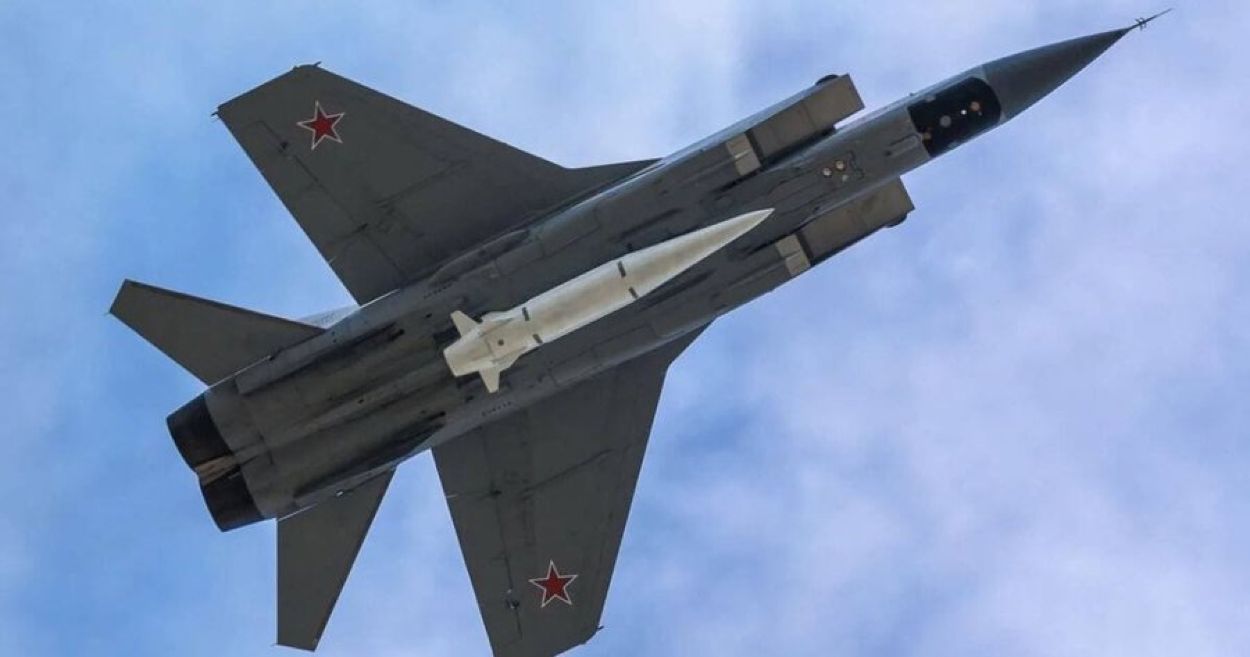Russia claims to have thwarted a joint Ukrainian-British plot to steal MiG-31 aircraft equipped with Kinzhal hypersonic missile.
Kyiv dismissed the claims, labeling them as propaganda.
Russia, which initiated its full-scale invasion of Ukraine in 2022, frequently levels charges against Kyiv and its European partners for conducting sabotage activities, typically without presenting proof.
The Federal Security Service (FSB) announced that it had detected and stopped an effort by the Ukrainian Ministry of Defence, under British oversight, to steal a Russian MiG-31 high-altitude supersonic interceptor jet armed with the Kinzhal hypersonic air-launched missile.
It claimed that Kyiv sought to bribe Russian pilots with offers of $3 million and citizenship in a Western nation. According to the FSB, the plot involved directing the aircraft to a NATO facility in the Romanian Black Sea city of Constanta, where it would be downed by air defenses.
State media released FSB footage depicting a Russian soldier, with his face hidden, describing an email from a Ukrainian intelligence operative attempting to enlist him. Both Kyiv and Bucharest denied the allegations.

Ukraine’s Center for Countering Disinformation stated on social media that disseminating such fabricated claims is a standard method employed by Russian intelligence agencies. It asserted that Moscow aimed to frighten Western populations and erode support for military aid to Ukraine.
Romania’s foreign ministry spokesperson, Andrei Tarnea, described it as a fabricated tale akin to Soviet-era espionage fiction. He noted that genuine issues include Russian aggression and provocations, which these narratives about aircraft and spies seek to obscure.
The claims resemble an event from August 2023, when a Russian Mi-8 helicopter pilot defected by flying into Ukraine in a mission orchestrated by Kyiv’s security services.
The crew, unaware of the plan, was killed while attempting to flee, as confirmed by both sides at the time. The pilot, Maxim Kuzminov, was discovered dead in Spain in February 2024.
The MiG-31K variant was purpose-built to carry and launch the Kh-47M2 Kinzhal aero-ballistic missile, transforming the Cold War-era interceptor into a strategic strike platform.
To accommodate the 4.3-ton Kinzhal, engineers reconfigured the aircraft’s internal layout. The radar array was removed or significantly downgraded, freeing volume for additional fuel tanks that extend endurance during long-range patrols.
The two-seat cockpit was revamped with new digital displays, targeting pods, and secure communication systems to receive real-time coordinates via encrypted datalink. A bespoke target designation interface allows crews to program the missile’s flight path mid-flight using live radar imagery and satellite updates.
The crew cabin was redesigned, with additional systems installed to manage targeting and the launch of the Kinzhal. Also, new communication equipment to receive targeting data.
A unique target designation system was developed to allow the missile’s flight trajectory to be directly programmed from the aircraft using real-time coordinates and radar images received over an encrypted datalink.
The internal reconfiguration and the missile’s weight shifted its center of gravity (C of G). As a result, the MiG-31K behaves differently in flight than the MiG-31BM.
Flight limitations were altered; pilots had to be specifically trained to take off and land with the Kinzhal suspended under the fuselage. The mandated accuracy of Kinzhal launch parameters required a more accurate navigation system.
The fuselage had to be tweaked aerodynamically, and the aircraft’s engines were modernized to improve thrust.
The launch sequence for the Kinzhal is complex. The Kinzhal missile is essentially an Iskander-M missile without its first stage. The MiG-31K launching the missile assumes the role of the Iskander-M’s missing first stage.
To launch a Kinzhal, the aircraft needs to accelerate to a precalculated speed and gain altitude, taking the missile to a point in the air where the first stage of the Iskander-M would have cutoff.
Achieving the correct launch parameters requires exceptional pilot skill.
During the Army-2021 forum, the RuMoD signed a state contract for the modernization of MiG-31K aircraft. The modernization reportedly involved equipping the MiG-31K with an automatic Kinzhal launch system that will autonomously fly the aircraft to achieve the right attitude, altitude & speed to launch the Kinzhal missile.
The aircraft crew will only monitor the instruments and launch at the right time. The intent was to speed up pilot training for launching Kinzhal missiles.
Operationally, the pair has shone in Russia’s military operations in Ukraine. Kinzhal barrages targeted Kyiv’s critical infrastructure, with MiG-31Ks launching from standoff distances to minimize exposure.
- By ET Desk
- With Inputs from AFP and Vijainder K Thakur




